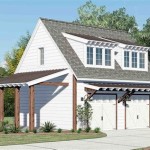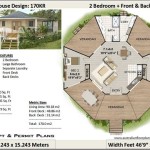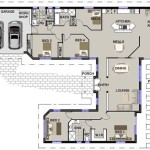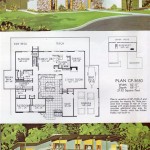Building Plans for Tiny Houses on Wheels: A Comprehensive Guide
The allure of tiny houses on wheels is undeniable. These compact, portable dwellings offer a unique blend of simplicity, affordability, and freedom. Whether you're seeking a minimalist lifestyle, an off-grid retreat, or a unique and efficient way to travel, building your own tiny house on wheels can be a rewarding experience. However, before embarking on this journey, it's crucial to have comprehensive building plans in hand.
Building plans for tiny houses on wheels are essential for several reasons. They provide a detailed blueprint for construction, ensuring consistency, accuracy, and adherence to structural integrity. These plans also serve as a valuable reference point for obtaining permits, acquiring materials, and coordinating with contractors. Moreover, well-designed plans optimize space utilization, promote efficient construction, and help avoid costly mistakes.
Key Considerations for Tiny House Building Plans
Choosing the right building plans is a crucial step in the tiny house construction process. Several key considerations should guide your decision:
1. Floorplan and Design
The floorplan determines the layout and functionality of your tiny house. Consider your lifestyle, needs, and preferences when choosing a floorplan. Do you prefer a single-story or loft design? How many bedrooms and bathrooms do you require? What size kitchen and living area are suitable for your needs? Explore various floorplan examples and envision how you would utilize the space.
2. Structural Integrity and Building Codes
Tiny houses, especially those on wheels, must meet specific structural requirements and comply with local building codes. Ensure the building plans incorporate adequate framing, insulation, and load-bearing elements to ensure the house's stability and safety. Consult with a structural engineer or a building inspector to verify compliance with local regulations.
3. Trailer Chassis and Towing Capacity
The trailer chassis forms the base of your tiny house and dictates its weight and towing capacity. Choose a chassis that can accommodate the weight of your house and meets your towing needs. Consider the size, weight, and type of vehicle you plan to use for towing the tiny house.
4. Customization and Personalization
While pre-designed plans offer a starting point, the beauty of building a tiny house lies in the ability to personalize it to your liking. Consider what unique features or design elements you'd like to incorporate. Whether it's a custom kitchen layout, a built-in office space, or a specific window configuration, ensure that the plans allow for these personalized features.
5. Cost and Budget
Building plans can vary in price, depending on their complexity, level of detail, and the services included. Consider your budget and the scope of your project when choosing plans. Some plans may require you to hire a professional for specific aspects of construction, while others offer detailed instructions that you can follow independently.
Types of Available Building Plans
A variety of resources offer tiny house building plans, both free and paid. Here are some common options:
1. Online Resources and Websites
Websites dedicated to tiny living offer an extensive collection of building plans, often categorized by design style, size, and features. These platforms often feature detailed drawings, material lists, and construction guides. Popular resources include Tiny House Plans, The Tiny House Blog, and Tiny House Building Plans.
2. Books and E-books
Numerous books and e-books delve into the art of building tiny houses, providing comprehensive plans, construction tips, and design inspiration. These resources offer a more in-depth approach to tiny house construction, often including practical advice and case studies.
3. Professional Architects and Designers
For a customized and unique approach, consider hiring a professional architect or designer to create custom building plans tailored to your specific needs and preferences. This option provides a personalized experience, ensuring that the final design perfectly aligns with your vision.
4. DIY Plans and Kits
Some companies offer DIY plans and kits that provide pre-cut materials and detailed instructions for building a tiny house. While these options streamline the construction process, they may limit customization and require a comfortable level of DIY experience.
Tips for Choosing and Using Building Plans
Here are some additional tips to make the most of tiny house building plans:
• Review the plans thoroughly and understand the scope of the project before starting construction.
• Communicate clearly with contractors or anyone involved in the building process.
• Use high-quality materials and adhere to the specified dimensions in the plans.
• Don't hesitate to seek guidance from experienced professionals when necessary.
• Document the entire construction process, including photos and notes, for future reference.
Building a tiny house on wheels is a challenging yet rewarding endeavor. Comprehensive building plans are vital for a successful and enjoyable experience. By carefully considering the key factors, exploring different plan options, and following the provided guidance, you can embark on your tiny house journey with confidence and create a home that truly reflects your unique needs and aspirations.

Tiny House Floor Plans 32 Long Home On Wheels Design Trailer

Escape Traveler A Tiny House On Wheels That Comfortably Sleeps 6 Floor Plans Trailer

224 Sq Ft Tiny House On Wheels By Living Homes Small Diy

How To Pick The Best Tiny House On Wheels Floor Plan Wayward Home

Tiny House Plans The Project

Free Tumbleweed Diy Tiny House Plans Houses

27 Adorable Free Tiny House Floor Plans Craft Mart

Tiny House Floor Plans 32 Home On Wheels Design

Tiny House Plans On Wheels Main Floor Bedroom Office Lofts

Floor Plans For Your Tiny House On Wheels Photos
Related Posts








